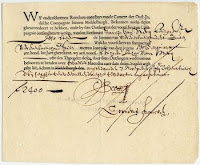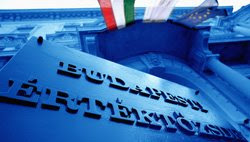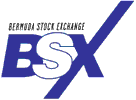
The Bolsa de Valores de Colombia, also known as BVC, is the principal stock exchange of Colombia. It was created on July 3, 2001 by the union of three extant stock exchanges in Colombia: Bolsa de Bogotá, Bolsa de Medellín and the Bolsa de Occidente in Cali.
The company maintains offices in Bogotá, Medellín and Cali.
n 1990, the administration of President César Gaviria Trujillo (1990-94) initiated economic liberalism policies or "apertura economica" and this has continued since then, with tariff reductions, financial deregulation, privatization of state-owned enterprises, and adoption of a more liberal foreign exchange rate. Almost all sectors became open to foreign investment although agricultural products remained protected.
The original idea of his then Minister of Finance, Rudolf Hommes, was that the country should import agricultural products in which it was not competitive, like maize, wheat, cotton and soybeans and export the ones in which it had an advantage, like fruits and flowers. In ten years, the sector lost 7,000 km² to imports, represented mostly in heavily subsidized agricultural products from the United States, as a result of this policy, with a critical impact on employment in rural areas.[2] Still, this policy makes food cheaper for the average Colombian than it would be if agricultural trade were more restricted.
Until 1997, Colombia had enjoyed a fairly stable economy. The first 5 years of liberalization were characterized by high economic growth rates of between 4% and 5%. The Samper administration (1994-98) emphasized social welfare policies which targeted Colombia's lower income population. However, these reforms led to higher government spending which increased the fiscal deficit and public sector debt, the financing of which required higher interest rates. An over-valued peso inherited from the previous administration was maintained.
The economy slowed, and by 1998 GDP growth was only 0.6%. In 1999, the country fell into its first recession since the Great Depression. The economy shrank by 4.5% with unemployment at over 20%. While unemployment remained at 20% in 2000, GDP growth recovered to 3.1%.
The administration of President Andrés Pastrana Arango, when it took office on August 7, 1998, faced an economy in crisis, with the difficult internal security situation and global economic turbulence additionally inhibiting confidence. As evidence of a serious recession became clear in 1999, the government took a number of steps. It engaged in a series of controlled devaluations of the peso, followed by a decision to let it float. Colombia also entered into an agreement with the International Monetary Fund which provided a $2.7 billion guarantee (extended funds facility), while committing the government to budget discipline and structural reforms.
By early 2000 there had been the beginning of an economic recovery, with the export sector leading the way, as it enjoyed the benefit of the more competitive exchange rate, as well as strong prices for petroleum, Colombia's leading export product. Prices of coffee, the other principal export product, have been more variable.
Economic growth reached 3.1 % during 2000 and inflation was 9.0% although unemployment has yet to significantly improve. Colombia's international reserves have remained stable at around $8.35 billion, and Colombia has successfully remained in international capital markets. Colombia's total foreign debt at the end of 1999 was $34.5 billion with $14.7 billion in private sector and $19.8 billion in public sector debt. Major international credit rating organizations have dropped Colombian sovereign debt below investment grade, primarily as a result of large fiscal deficits, which current policies are seeking to close.
Several international financial institutions have praised the economic reforms introduced by current president Álvaro Uribe (elected August 7, 2002), which include measures designed to reduce the public-sector deficit below 2.5% of GDP in 2004. The government's economic policy and democratic security strategy have engendered a growing sense of confidence in the economy, particularly within the business sector, and GDP growth in 2003 was among the highest in Latin America, at over 4%. By 2007, GDP grew over 8%.

 The ADSM has more companies listed than DFM but trading volume is usually much less. During 2004-2005 there was a substantial increase in share prices and trading activity. From the end of 2005 through until mid-2006 there was a significant downturn with the overall ADSM index dropping just over 30% in the first six months of 2006.
The ADSM has more companies listed than DFM but trading volume is usually much less. During 2004-2005 there was a substantial increase in share prices and trading activity. From the end of 2005 through until mid-2006 there was a significant downturn with the overall ADSM index dropping just over 30% in the first six months of 2006.
















